↑ Click the “LPWAN Technology” above to follow us
Source: LPWAN Industry Alliance, organized and published by the “LPWAN Technology” WeChat public account (IoT-LPWAN). Please indicate the source when reprinting.

The Relationship Between LPWAN and LoRaWAN
LPWAN, also known as LPN, stands for Low Power Wide Area Network or Low Power Network, referring to a type of wireless network. This wireless network emphasizes low power consumption and long distance, typically used for networking battery-powered sensor nodes. Due to its characteristics of low power and low data rate, this network is distinctly different from other wireless networks used for commercial or personal data sharing (such as WiFi, Bluetooth, etc.).
In applications, LPWAN can be built into a private network using a concentrator or connected to a public network via a gateway.
Because LPWAN sounds similar to LoRaWAN, coupled with the recent excitement around LoRaWAN in the IoT field, many people confuse these two concepts. In fact, LoRaWAN is just one type of LPWAN, and there are several other similar technologies competing with LoRaWAN.
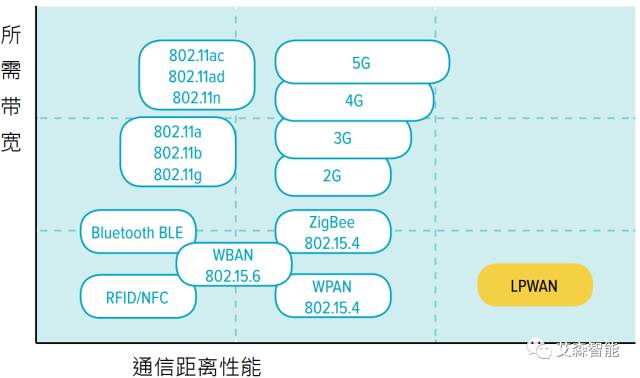
Figure 1: LPWAN Compared to Other Wireless Networks
In summary, LPWAN has the following characteristics:
-
Two-way communication with acknowledgment
-
Star topology (generally does not use repeaters or mesh networking for simplicity)
-
Low data rate
-
Low cost
-
Very long battery life
-
Relatively long communication distance
Applications suitable for LPWAN:
-
IoT, M2M
-
Industrial automation
-
Low-power applications
-
Battery-powered sensors
-
Smart cities, smart agriculture, meter reading, streetlight control, etc.
The Relationship Between LoRaWAN and LoRa
Similarly, due to name similarities, many people confuse the concepts of LoRaWAN and LoRa. In fact, LoRaWAN refers to the MAC layer networking protocol, while LoRa is just a physical layer protocol. Although existing LoRaWAN networks typically use LoRa as the physical layer, the LoRaWAN protocol also specifies that GFSK can be used as the physical layer in certain frequency bands. From a network layering perspective, LoRaWAN can use any physical layer protocol, and LoRa can also serve as the physical layer for other networking technologies. In fact, several competing technologies with LoRaWAN also use LoRa at the physical layer.
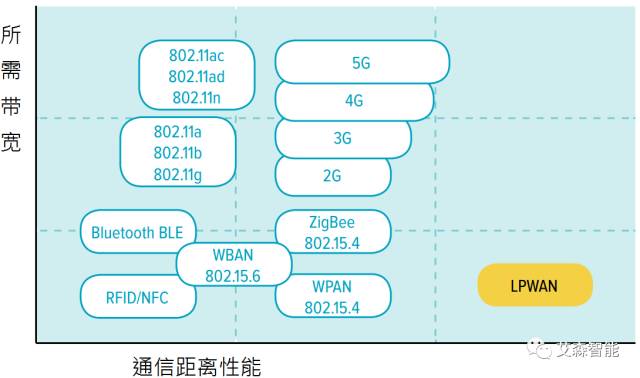
Figure 2: LoRaWAN Network Layering (LoRa is used as the physical layer in the image, but note that the physical layer and MAC layer are independent. The wireless frequency band shown in the image is the ISM band, but from a technical perspective, any frequency band can be used.)
Main Competing Technologies of LoRaWAN
There are multiple LPWAN technologies on the market that also use LoRa as the physical layer, such as aiCast from Shenzhen Aisenz Inc. aiCast supports unicast, multicast, and broadcast, making it more complex and complete than LoRaWAN. Many applications that are impossible under LoRaWAN can therefore be realized.
Sigfox uses a slow BPSK rate (300bps) and has some promising application cases.
NB-IoT (Narrow Band-IoT) is an IoT network based on existing mobile communication technology in the telecommunications industry. Its characteristic is the use of existing cellular communication hardware and frequency bands. Both telecom operators and hardware vendors are very enthusiastic about this technology.
Introduction to Key Technology LoRa
The core technology of LoRaWAN is LoRa. LoRa is a proprietary modulation technology from Semtech (acquired from CycleoSAS in 2012). To help readers unfamiliar with digital communication technology understand, let’s first introduce two common modulation techniques: FSK and OOK. These two modulation methods are chosen because:
-
They are the simplest, most basic, and most common digital communication modulation methods.
-
Both are supported on Semtech’s SX127x chip along with LoRa, especially FSK is often used for performance comparison with LoRa.
OOK
OOK stands for On-Off Keying. The core idea is to use a carrier to represent one binary value (usually 1, but can also represent 0 in reverse), and no carrier to represent the other binary value (forward is 0, reverse is 1).
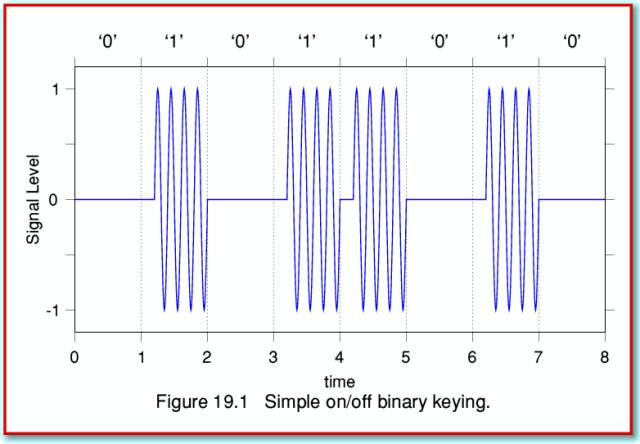
Figure 3: OOK Time Domain Waveform
When switching between 0 and 1, a relatively short empty interval without a carrier is also inserted to add some redundancy for multipath delay to facilitate demodulation at the receiving end. OOK is advantageous for low-power wireless applications because it only transmits about half of the carrier time, allowing the carrier to be turned off to save power for the rest of the time. However, its downside is poor noise immunity.
FSK
FSK stands for Frequency Shift Keying. The LoRaWAN protocol also specifies that it supports (G)FSK in certain frequency bands in addition to LoRa. The core idea of FSK is to use two carrier frequencies to represent 1 and 0. As long as the two frequencies are sufficiently different, the receiving end can demodulate using a simple filter.
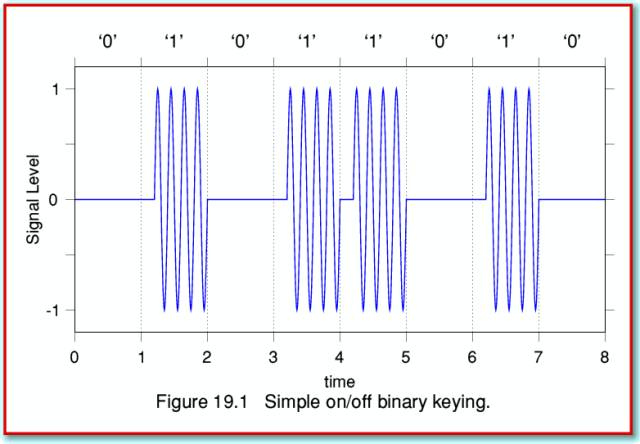
Figure 4: FSK Time Domain Waveform
For the transmitting end, a simple approach is to use two frequency generators, one at Fmark and the other at Fspace. The baseband signals of 1 and 0 control the output to complete FSK modulation. However, in such implementations, the two frequency sources are usually out of phase, leading to discontinuities when switching between 0 and 1, which ultimately creates additional interference for the receiver. Actual FSK systems typically use only one frequency source and control the frequency source to shift during the switch between 0 and 1.
GFSK adds a Gaussian window to the baseband signal before modulation, making the frequency shift smoother. The goal is to reduce the power of the sideband frequencies to minimize interference with adjacent bands. The trade-off is increased intersymbol interference.
The Core of CSS-LoRa
LoRa is a novel modulation method that uses Chirp for spreading, and is a crucial component of all networking technologies based on LoRa technology (including LoRaWAN, aiCast, etc.). Technically, this modulation method should be referred to as FM (Chirp). In terms of implementation, the core technology of LoRa is the use of fractional PLL to generate a stable Chirp signal.
Let’s take a look at the Chirp signal (note: this term comes from the characteristic sound signal of the same-named bird; in signal processing, it can also be referred to as frequency sweeping). The characteristic of Chirp is that the signal frequency varies in a certain pattern, while FSK signals only switch between two frequency points.
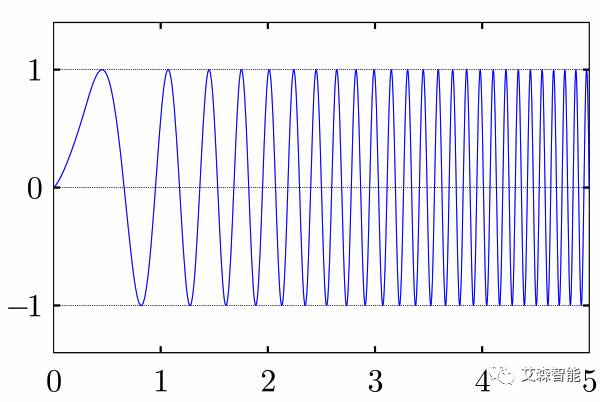
Figure 5: Linear Chirp Signal Time Domain Diagram
In the spectrum diagram, this signal appears as a line:
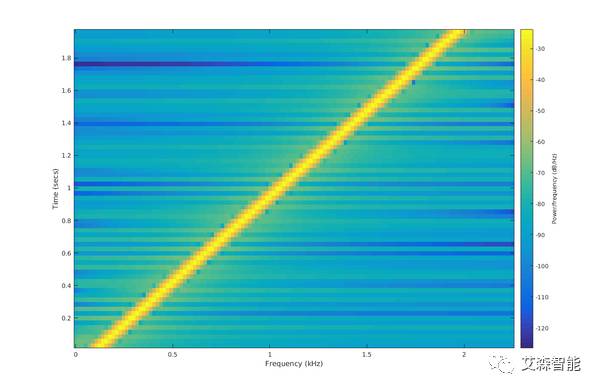
Figure 6: Linear Chirp Signal Spectrum Diagram
Of course, the frequency of the Chirp signal can change in various ways, such as exponential Chirp, logarithmic Chirp, etc. The core idea of LoRa modulation is to use this frequency variation pattern to modulate the baseband signal, and the rate of change of the Chirp is referred to as “Chirpness”; in Semtech’s data sheets and documents, it is called the spreading factor. The larger the spreading factor, the further the transmission distance. The trade-off is the data rate, as a longer chip is needed to represent a symbol.

Figure 7: Time Domain Signal of LoRa
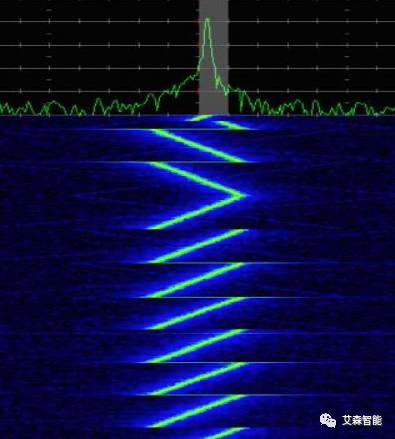
Figure 8: Frequency Domain Signal of LoRa
In summary, the LoRa modulation based on frequency sweeping has several distinct advantages over traditional modulation methods:
-
At both the receiving and transmitting ends, the time/frequency domain offsets are equal. This greatly reduces the design complexity of the receiver. The frequency bandwidth of the sweeping equals the signal’s frequency domain bandwidth.
-
Frequency sweeping generates processing gain, allowing the receiver to demodulate signals that are lower than the noise amplitude. Thus, under the same transmission power, the transmission distance increases significantly.
Processing gain (PG) is the ratio of the bandwidth after spreading to the bandwidth before spreading. To understand processing gain, let’s use an analogy. At a certain moment, if a radio has poor signal, it plays audio that is similar to noise. Suppose you record a 100ms audio segment at time T0, defining it as Audio0 (and remember the pattern of Audio0). If the radio later plays audio similar to Audio0, it can be said that Audio0 has been received. The practical implication is that when a signal is below the noise level, the receiver can only find it by filtering out all noise and using a dedicated filter. This is the key to LoRa’s receiving sensitivity performance; for example, FSK requires a signal-to-noise ratio (SNR) of about 10dB for stable reception, while LoRa requires a much lower SNR:
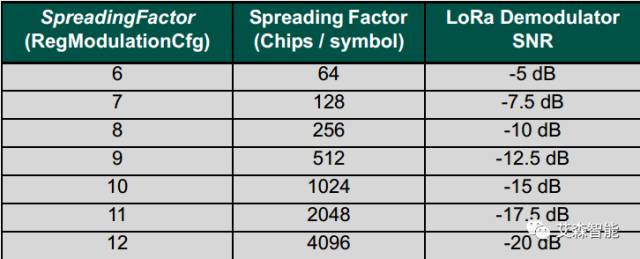
Figure 9: Different Spreading Factors of LoRa Transceiver Chip SX127X Corresponding to Demodulation SNR
Scalable Bandwidth
Can be used for both narrowband and wideband.
Constant Envelope/Low Power Consumption
Like FSK, it is a constant envelope modulation method, so it can directly use existing FSK power amplifiers, and due to PG (processing gain), it can achieve or exceed FSK’s link budget at lower power consumption.
High Robustness
Because of the use of spread spectrum modulation, a single LoRa symbol is longer than typical short burst periods of frequency hopping communication, thus providing strong suppression of AM pulse interference, with typical channel selectivity reaching 90dB and in-channel rejection reaching 20dB. For FSK, these parameters are approximately 50dB and -6dB, respectively.
Resistance to Multipath/Fading
Due to the relatively large bandwidth of a single frequency sweeping pulse, it is basically unaffected by multipath/fading.
Resistance to Doppler Effect
The frequency shift caused by the Doppler effect will only lead to a negligible time-axis shift in the LoRa baseband signal.
Large Network Capacity
In terms of individual spreading factors, LoRa’s capacity is lower than FSK. However, since the channels of multiple spreading factors are orthogonal, the overall capacity of the LoRa network is equal to the sum of the capacities of all spreading factor channels. For example, for a 125KHz bandwidth:
If divided into 12 narrowband FSK channels, each channel’s equivalent baud rate is 1200, then:
CapacityFSK = 12 * 1200 = 14400 bps
If the same bandwidth is allocated to a single LoRa channel for modulation, since all SF channels are orthogonal, then:
CapacityLoRa
= 1 * (SF12 + SF11 + SF10 + SF9 + SF8 + SF7 + SF6)
= 1 * (293 + 537 + 976 + 1757 + 3125 + 5468 + 9375)
= 21531 bps

Long press the QR code to follow the “LPWAN Technology” public account